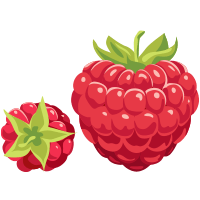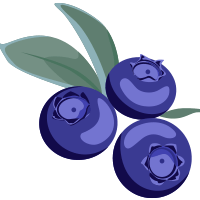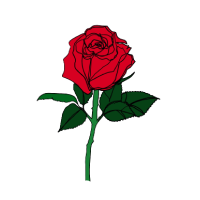The Nebbiolo grapes for this Barbaresco “Roncaglie Masseria” are sourced from the Cru vineyard Roncaglie (MGA di Barbaresco), which produces excellent Barbaresco wines. Vietti’s plot faces south-west and lies at a height of approx. 240 – 280 m.a.s.l. The vines are on average 30 years old and grow on a mixture of lime, clay and Sant’Agata’s marl, which is classic for the area. A planting of 4,600 vines/ha. with a Guyot pruning ensures few bunches per vine, but on the other hand great concentration.
2018 saw a rainy spring in Barbaresco, which required a lot of attention in the vineyards, and many had begun to anticipate a light vintage. Fortunately, the sun and heat came at the end of June and ensured a good ripening and especially a good balance between fruit, acidity and fleshiness. The result was wines with good aroma and precision in the scent, lots of complexity and elegance in the taste and a fine, rounded tannin at the end. 2018 will probably mature a bit faster than, for example, 2016 and 2017.
The Nebbiolo grapes were harvested manually on September 30 at Roncaglie, and after gentle destemming and crushing, they underwent a short maceration, both before and after the approx. 3 weeks of alcoholic fermentation in steel tanks. After pressing, the wine was transferred to wooden barrels and the malolactic fermentation started. Subsequently, the wine was matured for 30 months in a mixture of mainly large Slovenian wooden barrels and a few French barriques. It was bottled without filtration.
The wine has a beautiful ruby red color with a dark violet tinge. The fragrance is very open with captivating nuances of roses and mint, ripe red fruits (cherries, raspberries), but also deep tones of dark fruits (blackberries) and licorice. The taste is both crisp, mineral and meaty and also reveals nuances of raspberry, blueberry and blackberry. In the aftertaste you find notes of almonds, violets, licorice and white pepper, but it is the wine’s fresh, delicate and delicate style that impresses the most. Served with red meat, game and mature cheeses.
The Vietti winery is located in the district of Langhe in Piedmont – more specifically at the village of Castiglione Falletto, which is particularly known for its Barolo wines. The winery was founded at the end of the 19th century by Carlo Vietti and thanks to the following generations, several vineyards have since been acquired – including some of the most highly regarded “Cru’s” in Barolo.
The 1960s became a decisive era for the company, when Luciana Vietti married the famous winemaker and art connoisseur, Alfredo Currado, who, among other things, was the first to produce single-vineyard wines (from, among other things, the cru vineyard “Rocche di Castiglione”), which made him an important trendsetter in Barolo. Alfredo was also called “Arneis’ father” because in 1967 he introduced a white wine produced exclusively from this rare, local grape. It was also he who in 1974 hired Italian artists to decorate the labels of some of Vietti’s wines – a practice that still exists.
The son-in-law, Mario Cordero, took over the management of the company in the 1980s and the son, Luca Currado Vietti, and his wife, Elena, then took over in the 1990s and onwards. Over the years, Alfredo’s life’s work has been continued with the same enthusiasm and striving to produce absolutely top-class wines. In 2016, the two branches of the Vietti family sell the company to the American family Krause (Krause Group), which, among other things, operates a chain of convenience stores in the United States. With the purchase, it is agreed that Luca and Elena will continue the management of Vietti until the beginning of 2023, after which the Krause family has now taken over the day-to-day management themselves. However, the continuity in relation to the high quality of the Vietti wines is still in the very safe hands of chief winemaker, Eugene Palumbo, who has been with Vietti since 2001.
Few places on earth are more beautiful than Piedmont on a sunny autumn day. The rolling hills with vineyards stand in golden colors with the snowy Alps in the background and blue sky above. What characterizes the autumn in Piedmont is now otherwise mist, which occurs when the cold mountain air from the Alps meets the warm air from the lowlands. In terms of wine, there are no other areas in Italy with so many DOC and DOCG. Wines such as Barbaresco, Barolo, Langhe, Barbera d’Alba or Moscato d’Asti have their staunch supporters, although the high prices for some of the wines put a damper on enthusiasm.
The area on the slopes around the village of Barbaresco, which produces DOCG Barbaresco (approx. 700 ha.) from pure Nebbiolo grapes, is cultivated quite intensively, and as soil conditions and exposure vary greatly, the style and quality of the wines from the district can vary greatly . In fact, there are no less than 66 “subzones” (“menzioni geografiche aggiuntive” or MeGAs) in the DOCG, and among them quite a few famous vineyards, which can almost be compared to “Cru” fields known from France. Of course, the skill of the producers also has a lot to say. For Barbaresco too, strict legislation regarding the regulation of e.g. yield and barrel aging has meant a major improvement in quality



